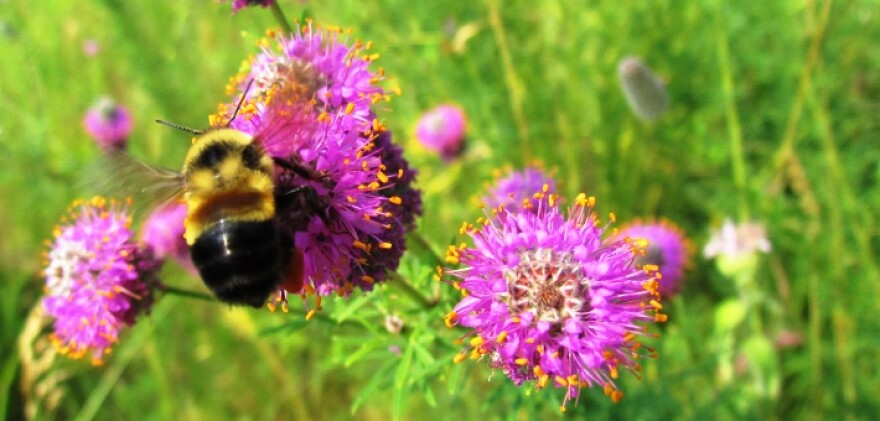For the first time, federal wildlife authorities this week have sought protection for a bee species under the Endangered Species Act.
The rusty patched bumblebee was once easy to find in the Midwest and eastern United States. Since the 1990s, its numbers have dropped by 87 percent, according to the U.S. Fish and Wildlife Service. Like many wild native bee species in the country, the bee has declined due to pesticide use, habitat loss and climate change, which has affected flowers it depends on.
"With the listing of the rusty patch as an endangered species, we're now in territory we've never been in before," said Damon Hall, a conservation scientist at Saint Louis University's Center for Sustainability. "We've crossed a threshold where it is evident that these species are in significant decline."
The rusty patched bumblebee has a distinctive orange band on its abdomen, a feature few other bees have, said Gerardo Camilo, a bee scientist at Saint Louis University. It also pollinates many berries and vegetables people consume.
"You would find it in sunflowers and just about anything they could fit into," Camilo said.
Bumblebees are important because unlike other bees, they perform "buzz pollination," in which they shake their abdomens in a very rapid manner as soon as they hit the flower. The motion causes the pollen to "explode" onto the bee's abdomen.

"Flowers that require buzz pollination cannot be as efficiently pollinated by any other type of bee," Camilo said.
The rusty patch bumblebee's presence has especially dropped in rural areas.
Mike Arduser, a retired natural history biologist for the Missouri Department Conservation, said the bee's colony must grow from the spring until early fall and require hundreds of acres full of flowering resources to support themselves and the next generation. The spread of monocultures, or planting one crop over many acres, will hurt bees.
"So if you have a landscape that has a lot of fescue, a lot of corn, soybeans and not many flowering plants that are useful to bumblebees, that means that there won't be as many bumblebees around because there just isn't enough food to support them," Arduser said.
Hall said the bee's addition to the Endangered Species Act list gives it a chance to avoid extinction.
"Now we have to consider this species' habitat whenever we use federal dollars for any project within its range," he said. "So yeah, I think recovery is possible."
The Fish and Wildlife Service recommends that people plant more native flowers to help raise the rusty patch bumblebee's numbers. That approach and others were also a part of an initiative Camilo and Hall conducted to educate local gardeners about ways that they can help pollinators.
"I think what's important is beginning to think about what recovery looks like for other related species that are a having a hard time with the way we are using our land," Hall said.
Follow Eli on Twitter @StoriesByEli.





